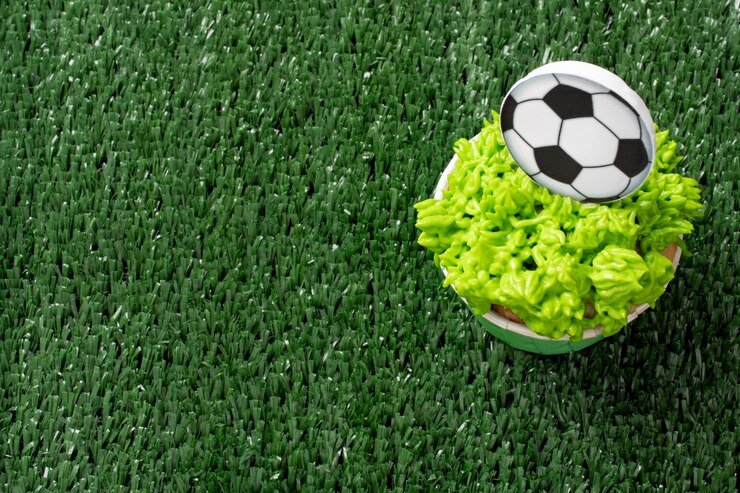The rise of artificial grass products has significantly impacted various industries, especially the global sports sector. From football fields to tennis courts, artificial grass has revolutionized how sports facilities are designed, maintained, and utilized. We will explore how Northern Ohio Lawn care service have provided enhanced performance, lower maintenance costs, environmental sustainability, and broader accessibility, transforming the sports industry worldwide. As traditional grass surfaces face climate-related challenges, wear and tear, and resource consumption, artificial turf presents an alternative that addresses these issues while offering unique advantages for athletes and facility owners alike.
Enhanced Durability and Performance
Artificial grass has gained significant attention in the sports industry due to its ability to withstand high use levels and harsh environmental conditions. Traditional grass fields often struggle with maintaining optimal conditions, particularly after heavy use or during extreme weather conditions, such as intense heat or excessive rainfall. In contrast, artificial turf is designed to endure year-round use without becoming worn down or damaged. This makes it an appealing choice for sports organizations and facilities that host numerous games, tournaments, or training sessions. The durability of artificial grass ensures that players have a consistent surface for practice and competition, contributing to better overall performance. Additionally, artificial turf can be engineered to offer specific features that enhance the playing experience, such as increased shock absorption or improved traction, which are essential for player safety and comfort.
Cost-Effectiveness and Reduced Maintenance
Maintaining natural grass fields can be both time-consuming and expensive. Regular watering, mowing, fertilizing, and replanting are required to keep the grass in good condition, contributing to high maintenance costs. In contrast, artificial grass significantly reduces these expenses by eliminating the need for irrigation systems, pesticides, and regular turf management. This results in substantial savings for sports clubs, schools, and other organizations that operate sports facilities. Furthermore, artificial grass requires less frequent maintenance, such as periodic brushing or infill replacement, which can be done more easily and at lower costs than maintaining a natural grass field. Over the long term, these savings allow sports organizations to allocate resources to other important areas, such as player development, infrastructure improvements, or community outreach programs.
Environmental Sustainability and Water Conservation
One of the most pressing environmental issues traditional grass fields face is the vast amount of water required to keep them healthy. Maintaining natural grass fields can be both unsustainable and inefficient in regions where water scarcity is a concern. Artificial grass, however, requires no water to maintain its appearance or functionality, making it a highly sustainable option. By reducing water consumption, sports facilities can contribute to water conservation efforts and reduce their environmental footprint. Moreover, artificial turf is typically made from recyclable materials, further enhancing its sustainability. With the growing importance of eco-friendly practices in the sports industry, artificial grass helps organizations meet environmental standards while maintaining high-quality playing surfaces for athletes.
Increased Accessibility and Versatility
The benefits of artificial grass extend beyond just professional sports venues. One of the key advantages is the ability to create multi-functional, all-weather sports surfaces accessible to a wider range of communities and athletes. Artificial grass fields can be used in various settings, such as schools, local parks, and recreational centers, where resources for maintaining natural grass may be limited. By providing a durable and low-maintenance option, artificial grass helps increase the accessibility of sports facilities for people of all ages and skill levels. Additionally, artificial turf can be used for various sports, including soccer, rugby, hockey, and tennis, making it a versatile option for venues hosting multiple events. This versatility allows for more efficient use of space and encourages greater participation in physical activities, contributing to healthier communities and a broader engagement with sports.
Improved Player Safety and Injury Prevention
In addition to offering consistent performance and durability, artificial grass has been designed to improve player safety and minimize the risk of injuries. Traditional grass surfaces can become uneven or develop dangerous patches that may lead to ankle twists, knee injuries, or other types of trauma. Artificial turf, however, provides a uniform surface that reduces the likelihood of such injuries. Many artificial grass products are engineered with specific features, such as shock-absorbing layers, to cushion players’ movements and lessen the impact of falls. Furthermore, maintaining a stable, well-maintained surface reduces the chances of slippery conditions, which can cause accidents. As sports organizations emphasize player safety, artificial grass has become a viable alternative that contributes to a safer playing environment, especially for professional athletes who compete at the highest levels.
Artificial grass products have undeniably transformed the global sports industry, offering athletes and sports facility owners numerous advantages. From durability and cost-effectiveness to environmental sustainability and increased accessibility, artificial turf is shaping the future of sports infrastructure. By providing high-quality, low-maintenance, and versatile playing surfaces, artificial grass helps promote safer, more inclusive sports environments while addressing pressing concerns about resource consumption and environmental impact. As the sports industry continues to evolve, the role of artificial grass in enhancing performance and creating sustainable facilities will only become more critical, further solidifying its place as a vital asset in the world of sports.
